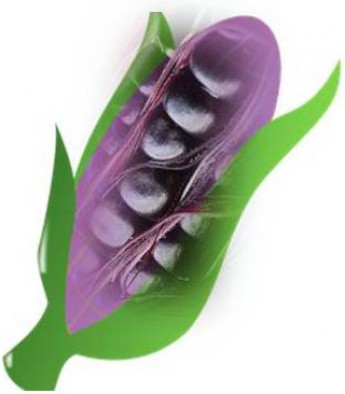 An interesting development was seen in a study on the subchronic toxicity of purple corn (particularly its extract for coloring). The term “sub chronic” means the bad effects after subjecting lab animals repeatedly to certain chemicals. In this case, the lab animals (rodents) were subjected to repeated feeding of the purple corn extract to see if it has any toxic effect.
An interesting development was seen in a study on the subchronic toxicity of purple corn (particularly its extract for coloring). The term “sub chronic” means the bad effects after subjecting lab animals repeatedly to certain chemicals. In this case, the lab animals (rodents) were subjected to repeated feeding of the purple corn extract to see if it has any toxic effect.
The result was zero. To be exact, this was how the PubMed article put it: “No mortalities occurred during the treatment period.”
The rats were fed the purple corn extracts for 90 days at various levels–from 0% to 1.5% to 5.0%. There were no changes noted in the body weight of the rats that were treatment related, as well as their appetite, eye capacity, blood, weight of the body organs, and histopathology.
However, staining on the rats’ fur were noted and black feces were seen from the groups that received the 1.5% and 5.0% extracts. The rats that got the 5% were particularly noted to have brown urine and black material was seen in their stomachs and small and large intestines. But these changes, according to the study were only due to the anthocyanin content of purple corn.
On the rats’ blood chem, cholesterol, triglyceride, and phospholipid levels were noted to have lowered significantly in both male and female rats in the 5% group. According to the article, such results were toxicologically insignificant. In the end, the study said the no-observed-adverse-effect-level was seen to be 5.0% in the diet for the make and female subjects for purple corn color extract considering the present conditions in the test.
This indeed is good news for purple corn businesses and for those who want to try this super food but are wondering about its toxicity. Some food crops and herbs that are observed to have powerful health effects are sometimes also found to have some toxicity level. Some fish, for instance, which are allegedly good for health, have been found to have high lead and other harmful metal contents.
The lab test on purple corn described above were done with rodents, but many experts believe that results from tests done with rats are just a few steps away from being somewhat similar with the results of tests done with humans. Of course, it remains to be seen how the extracts would affect human subjects. But at least, with these test results on rats, we have an idea.
